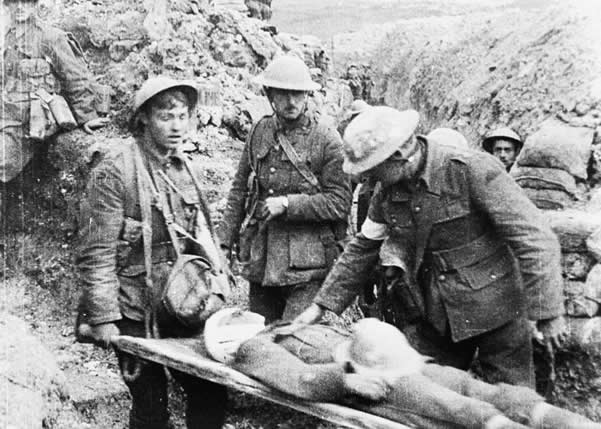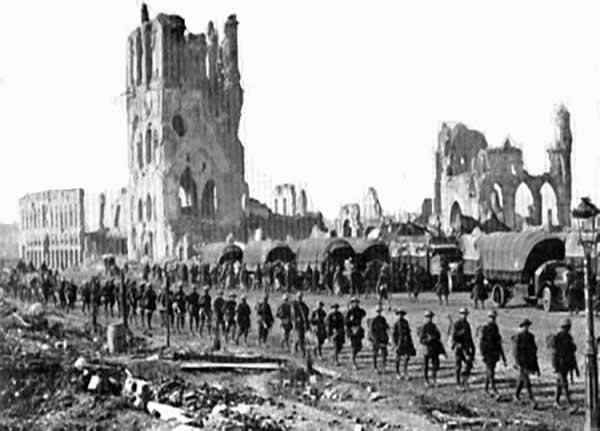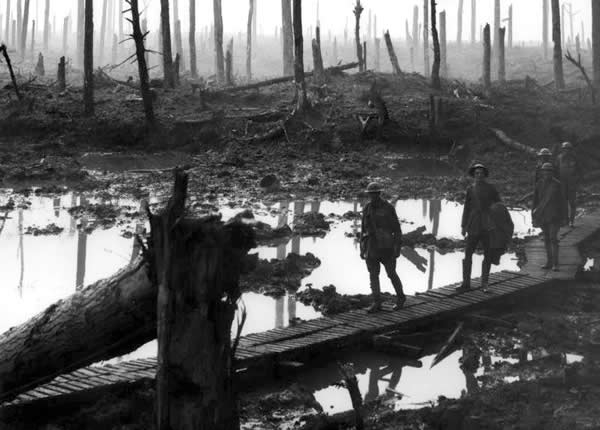WW1 -1917
The year 1917 saw great changes in the course of the war. In February, the German Army executed a strategic retreat to pre-prepared positions, known as the Hindenburg Line.
Major Battles of WW1| ArticleBattle of Khadairi Bend | Opened 9 January 1917 |
| ArticleBattle of Nahr-al-Kalek | Opened 26 February 1917 |
| Capture of Baghdad | Opened 11 March 1917 |
| Samarrah Offensive | Opened 13 March 1917 |
| Seizure of Falluja | Opened 19 March 1917 |
| First Battle of Gaza | Opened 26 March 1917 |
| Battle of Jebel Hamlin | Opened 25 March 1917 |
| Battle of Vimy Ridge | Opened 9 April 1917 |
| Battle of Shiala | Opened 11 April 1917 |
| Second Battle of the Aisne | Opened 16 April 1917 |
| Second Battle of Gaza | Opened 21 April 1917 |
| Battle of Istabulat | Opened 30 April 1917 |
| Battle of the Boot | Opened 30 April 1917 |
| Tenth Battle of the Isonzo | Opened 12 May 1917 |
| Battle of Otranto Straits | Opened 14 May 1917 |
| Battle of Messines | Opened 7 June 1917 |
| Third Battle of Ypres | Opened 31 July 1917 |
| Third Battle of Ypres (2) | Opened 31 July 1917 |
| Battle of Passchendaele | Opened 31 July 1917 |
| Eleventh Battle of the Isonzo | Opened 19 August 1917 |
| Battle of Ramadi | Opened 28 September 1917 |
| Twelfth Battle of the Isonzo | Opened 24 October 1917 |
| Battle of Caporetto | Opened 24 October 1917 |
| Third Battle of Gaza | Opened 31 October 1917 |
| Battle of Beersheba | Opened 31 October 1917 |
| Capture of Tikrit | Opened 5 November 1917 |
| Battle of Mughar Ridge | Opened 13 November 1917 |
| Battle of Cambrai | Opened 20 November 1917 |
| Fall of Jerusalem | Opened 8 December 1917 |
The year 1917 saw great changes in the course of the war. In February, the German Army executed a strategic retreat to pre-prepared positions, known as the Hindenburg Line. Major German successes in the east contributed to two revolutions in Russia where Tsar Nicholas II was forced to abdicate (February/March) and a Bolshevik regime under Lenin was established in October/November. The October Revolution took Russia out of the war (an armistice was declared in December 1917 and a Russo-German peace treaty was signed at Brest-Litovsk in March 1918). This meant that German forces could concentrate more fully on the Western Front. The impact of this development was less than might have been expected for, as a result of German attempts to entice Mexico to invade the United States, on 6 April the USA declared war on Germany. This meant not only the prospect of new ships, troops, supplies and weapons assisting on the Western Front but also opened up the prospect of financial and commercial assistance to the depleted Allied nations.
The Allied forces co-ordinated a major push from the spring and, in April, the British pushed forward in the battle of Arras. In July, battle was again joined at Ypres (Passchendaele), where mustard gas was used in an attempt to break the lines and British casualties were severe in respect to the amount of territory gained. A different tactic was employed in November when, at Cambrai, a mass use of tanks was employed for the first time. Although significant ground was taken by the use of the tanks, a German counter-attack later in the month retook all that had been gained earlier.
Outside Europe, Allied forces were increasingly in control. Despite major setbacks in the first two years of the war - as the Turks attempted to gain control of the Suez Canal - by mid-1917 British forces were again in control of Baghdad and Jerusalem at the expense of the Ottoman Empire. (On 2 November, the Balfour Declaration was issued guaranteeing the establishment of a Jewish homeland.) Earlier in the year, Lawrence of Arabia had helped co-ordinate an Arab attack on Akaba and, by October 1918, the Ottoman Empire had agreed to an armistice.
At sea, submarine warfare was intensified and British food reserves ran dangerously low in the spring. Two innovations - the convoy system (where ships travelled in groups with military escort) and rationing (of meat, butter, lard, margarine and sugar) - led to the overcoming of this problem. Developments on the Home Front came with equal pace: on 28 March the Women's Army Auxiliary Corps was formed, placing women into the heat of warfare in a military sense for the first time; in April 1918, the junior service (the Royal Air Force) was founded. British anti-German feeling had increased as the war had gone on and, on 17 June, the British royal family changed their surname to Windsor to appear more British.Source BBC History website
Germany declares war on Belgium. United States declares neutrality. Great Britain gives Austria-Hungary ultimatum to stand down from hostilities. When Austria-Hungary doesn't comply a state of war is declared at 11.00pm
- The total number of deaths includes about 10 million military
- The total number of deaths includes about 7 million civilians.
- 98 Servicemen/Women went from lemsford
- 78 came back to Lemsford Parish
- 20 Men Never came back
| Shirley Knapp | The Cochrane Family |
|---|---|
| Doreen Wright | William Henry Gardener |
| Ron Forsdykes | Frederick William Reynolds |
| H.J.Brown | The Brown Brothers |
| The Letters of Lemsford | Read the lettters to and from the troops |



